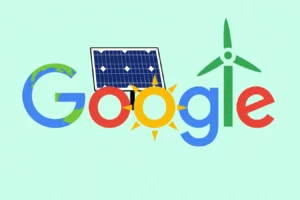Telenor is a telecommunications company with a mission to connect people and businesses across the globe. In today’s world, connectivity has become increasingly important, as it enables individuals and communities to access information, communicate, and participate in the global economy. Telenor recognizes the power of connectivity to drive social and economic development, and is committed to bridging the digital divide by providing access to affordable and reliable telecommunications services.
Understanding the digital divide: The challenges and opportunities
The digital divide refers to the gap between those who have access to digital technologies and those who do not. This divide has significant implications for society, as it can exacerbate existing inequalities and hinder progress in areas such as education, healthcare, and economic development. Bridging the digital divide is a complex challenge that requires addressing various barriers, including infrastructure limitations, affordability issues, and lack of digital literacy.
One of the main challenges in bridging the digital divide is the lack of infrastructure in many remote and underserved areas. Without proper infrastructure, it is difficult to provide reliable and affordable connectivity to these communities. Additionally, affordability is a major barrier for many individuals, particularly in low-income countries where the cost of internet access can be prohibitively high. Finally, there is a need to improve digital literacy skills among populations that are currently unconnected. Many individuals lack the necessary knowledge and skills to effectively use digital technologies, which limits their ability to fully participate in the digital world.
Despite these challenges, there are also significant opportunities for growth and development through increased connectivity. Access to digital technologies can empower individuals and communities by providing them with information, resources, and opportunities for economic advancement. It can also improve access to essential services such as healthcare and education. By bridging the digital divide, we can create a more inclusive and equitable society where everyone has the opportunity to thrive.
Telenor’s global footprint: Where we operate and our impact
Telenor operates in various countries and regions around the world, including Norway, Sweden, Denmark, Finland, Thailand, Malaysia, Bangladesh, Pakistan, Myanmar, and Serbia. Through its presence in these countries, Telenor has had a significant impact on local communities and economies.
In many of the countries where Telenor operates, access to telecommunications services was limited or non-existent before the company’s arrival. Telenor’s investments in digital infrastructure have helped to connect previously unconnected populations, enabling them to access information, communicate with others, and participate in the global economy. This has had a transformative effect on these communities, opening up new opportunities for education, healthcare, and economic development.
Telenor’s presence in these countries has also had a positive impact on local economies. The company has created jobs and contributed to economic growth through its investments in digital infrastructure. Additionally, Telenor’s services have enabled small businesses to reach new markets and expand their operations. By connecting people and businesses, Telenor is helping to drive economic development and reduce poverty in the communities it serves.
Building digital infrastructure: The backbone of connectivity
Digital infrastructure is the foundation of connectivity. It includes the physical infrastructure such as fiber optic cables and cell towers, as well as the software and systems that enable data transmission. Without proper digital infrastructure, it is impossible to provide reliable and affordable connectivity to communities.
Telenor recognizes the importance of digital infrastructure in enabling connectivity and has made significant investments in this area. The company has built and maintained a robust network of fiber optic cables and cell towers in the countries where it operates. This infrastructure provides the backbone for Telenor’s telecommunications services, ensuring that individuals and businesses have access to reliable and high-speed internet connections.
In addition to building physical infrastructure, Telenor also invests in research and development to improve the efficiency and performance of its networks. The company is constantly exploring new technologies and innovations to enhance connectivity and provide a better user experience. By investing in digital infrastructure, Telenor is laying the groundwork for a more connected and digitally inclusive world.
Empowering communities: Telenor’s initiatives for digital inclusion
Telenor is committed to empowering communities through increased connectivity. The company has launched various initiatives to provide access to digital services and tools, particularly in underserved areas. These initiatives aim to bridge the digital divide by addressing barriers such as affordability and lack of digital literacy.
One example of Telenor’s initiatives for digital inclusion is its partnership with local governments and organizations to provide affordable internet access in rural areas. Through this partnership, Telenor has established community centers where individuals can access the internet at affordable rates. These centers also provide training and support to help individuals develop digital literacy skills.
Telenor has also launched initiatives to provide access to digital tools and services that can improve the lives of individuals and communities. For example, the company has partnered with healthcare organizations to develop mobile health applications that enable individuals to access healthcare services remotely. This is particularly beneficial for individuals in remote areas who may not have easy access to healthcare facilities.
By empowering communities through increased connectivity, Telenor is helping to create a more inclusive and equitable society where everyone has the opportunity to thrive.
Bridging the gender gap: Telenor’s efforts for women’s empowerment
The gender gap in digital access and usage is a significant challenge that needs to be addressed in order to bridge the digital divide. Women are often disproportionately affected by the lack of connectivity, which limits their ability to access information, education, and economic opportunities.
Telenor recognizes the importance of empowering women through increased connectivity and has launched various initiatives to address the gender gap. The company is committed to promoting gender equality in all aspects of its operations, from employment to product development.
One of Telenor’s initiatives for women’s empowerment is its partnership with local organizations to provide digital literacy training specifically targeted at women. These training programs aim to equip women with the necessary skills to effectively use digital technologies and participate in the digital economy. By improving digital literacy among women, Telenor is helping to bridge the gender gap in digital access and usage.
Telenor has also launched initiatives to provide affordable and accessible internet services to women in underserved areas. Through partnerships with local organizations, the company has established community centers where women can access the internet at affordable rates. These centers also provide training and support to help women develop digital literacy skills.
By empowering women through increased connectivity and digital literacy, Telenor is not only bridging the gender gap but also unlocking the potential of half the world’s population.
Education and digital literacy: Telenor’s role in promoting knowledge
Education and digital literacy are key components of bridging the digital divide. Without proper education and digital literacy skills, individuals are unable to fully participate in the digital world and take advantage of the opportunities it offers.
Telenor recognizes the importance of education and digital literacy in enabling individuals to thrive in today’s digital society. The company has launched various initiatives to promote education and digital literacy, particularly in underserved areas.
One example of Telenor’s initiatives in this area is its partnership with local schools and educational institutions to provide access to educational resources and tools. Through this partnership, Telenor has provided schools with internet connectivity and digital devices, enabling students to access educational resources online. The company has also developed educational applications and platforms that provide interactive learning experiences for students.
Telenor has also launched initiatives to provide digital literacy training for individuals of all ages. These training programs aim to equip individuals with the necessary skills to effectively use digital technologies and navigate the online world safely. By promoting education and digital literacy, Telenor is empowering individuals to take advantage of the opportunities offered by the digital world.
Innovation and partnerships: Telenor’s approach to driving progress
Innovation and partnerships are key to driving progress in connectivity and digital inclusion. Telenor recognizes the importance of collaboration and is committed to fostering innovation through partnerships with other organizations.
Telenor’s approach to innovation is centered around identifying and investing in new technologies and solutions that can enhance connectivity and improve the user experience. The company is constantly exploring new innovations in areas such as 5G, Internet of Things (IoT), and artificial intelligence (AI) to stay at the forefront of technological advancements.
Telenor also believes in the power of partnerships to drive progress. The company collaborates with a wide range of organizations, including governments, non-profit organizations, and technology companies, to develop innovative solutions and initiatives. By leveraging the expertise and resources of its partners, Telenor is able to achieve greater impact and reach more communities.
One example of Telenor’s partnerships for driving progress is its collaboration with local governments to develop smart city solutions. Through this partnership, Telenor has helped to transform cities by implementing technologies that improve efficiency, sustainability, and quality of life. These smart city solutions include initiatives such as smart transportation systems, energy management systems, and digital citizen services.
By embracing innovation and partnerships, Telenor is driving progress in connectivity and digital inclusion, and creating a better future for all.
Measuring success: How Telenor evaluates its impact
Measuring the impact of initiatives is crucial for evaluating their effectiveness and making informed decisions about future investments. Telenor recognizes the importance of measuring success and has developed a comprehensive framework for evaluating the impact of its initiatives.
Telenor uses a range of metrics to evaluate the impact of its initiatives, including access metrics, usage metrics, and socio-economic impact metrics. Access metrics measure the number of individuals who have access to Telenor’s services, while usage metrics measure the extent to which individuals are using these services. Socio-economic impact metrics measure the broader impact of Telenor’s initiatives on communities and economies, such as improvements in education, healthcare, and economic development.
Telenor also conducts regular surveys and studies to gather feedback from its customers and communities. This feedback is used to assess the effectiveness of initiatives and identify areas for improvement. By continuously evaluating its impact, Telenor is able to make data-driven decisions and ensure that its initiatives are making a meaningful difference in the lives of individuals and communities.
The future of connectivity: Telenor’s vision for a digitally connected world
Telenor envisions a future where everyone is connected and has access to the opportunities offered by the digital world. The company is committed to working towards this vision by continuing to invest in digital infrastructure, promoting digital inclusion, and driving progress through innovation and partnerships.
In the coming years, Telenor plans to expand its presence in existing markets and enter new markets where there is a need for connectivity. The company will continue to invest in digital infrastructure to provide reliable and affordable connectivity to underserved areas. Telenor will also launch new initiatives to promote digital inclusion, particularly among women and marginalized communities.
Additionally, Telenor will continue to foster innovation through partnerships with other organizations. The company will explore new technologies and solutions that can enhance connectivity and improve the user experience. By embracing innovation and partnerships, Telenor aims to drive progress in connectivity and digital inclusion, and create a better future for all.
Conclusion:
Telenor’s mission to connect people and businesses across the globe is driven by a commitment to bridging the digital divide and promoting digital inclusion. Through its global footprint, Telenor has had a significant impact on local communities and economies by providing access to affordable and reliable telecommunications services. The company recognizes the importance of digital infrastructure in enabling connectivity and has made significant investments in this area. Telenor’s initiatives for digital inclusion, women’s empowerment, education, and digital literacy are helping to bridge the digital divide and unlock the potential of individuals and communities. By embracing innovation and partnerships, Telenor is driving progress in connectivity and digital inclusion, and working towards a future where everyone is connected and has access to the opportunities offered by the digital world.
















Add Comment